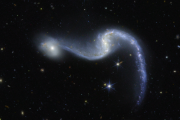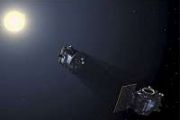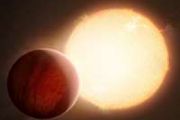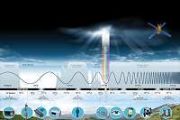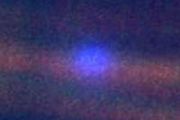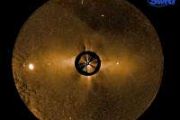- Home
- Forum
- Copernical Agora
- Launchers
- Vega launch failure - upper stage malfunction
Vega launch failure - upper stage malfunction
- Markides
- Topic Author
- Posts: 3
Vega launch failure - upper stage malfunction was created by Markides
SEOSAT
and
TARANIS
satellites were launched from the Centre Spatial Guyanais at 01:52:20 UTC on 17 November 2020 on a
Vega rocket
.
The flight was planned to deploy the satellites into 2 very slightly different sun-synchronous orbits at roughly 670 km (starting 54 minutes through to 102 minutes after lift-off), before the upper stage would have re-ignited to re-enter the Earth's atmosphere. However, the rocket failed after launch and the mission was lost. The exact cause is unknown.
The next Vega launch, VV18, is scheduled for early 2021, carrying the Pléiades-Neo 1 imaging satellite and a set of smallsat secondary payloads. However, this may now be in doubt depending on the outcome of a review of the latest failure.
It seems that there is an inherent design or at least development fault if 2 out of 3 launches have failed. However, its previous 14 launches were successful, so is this something to do with the recent build processes?
If anybody has any further information it would be very useful to have this input.
The flight was planned to deploy the satellites into 2 very slightly different sun-synchronous orbits at roughly 670 km (starting 54 minutes through to 102 minutes after lift-off), before the upper stage would have re-ignited to re-enter the Earth's atmosphere. However, the rocket failed after launch and the mission was lost. The exact cause is unknown.
The next Vega launch, VV18, is scheduled for early 2021, carrying the Pléiades-Neo 1 imaging satellite and a set of smallsat secondary payloads. However, this may now be in doubt depending on the outcome of a review of the latest failure.
It seems that there is an inherent design or at least development fault if 2 out of 3 launches have failed. However, its previous 14 launches were successful, so is this something to do with the recent build processes?
If anybody has any further information it would be very useful to have this input.
Please Log in to join the conversation.
- Posts: 4
Replied by alisek on topic Vega launch failure - upper stage malfunction
There will be a press conference Tuesday, November 17th, 2020 at 10:00 am Kourou time/2:00 pm Paris time. The call-in number will be provided to the media by Arianespace.
For further information:
Arianespace press contact: Gregory Gavroy
Email:
Tel: +33 (0) 6 42 30 22 34
ESA Newsroom and Media Relations contact: Ninja Menning
Email:
Tel: +31 71 565 6409
For further information:
Arianespace press contact: Gregory Gavroy
Email:
Tel: +33 (0) 6 42 30 22 34
ESA Newsroom and Media Relations contact: Ninja Menning
Email:
Tel: +31 71 565 6409
5 years 1 month ago
#19
Please Log in to join the conversation.
- Posts: 4
Replied by alisek on topic Vega launch failure - upper stage malfunction
The launcher fell in a completely uninhabited area close to the drop zone planned for the Zefiro 9 stage.
Initial investigations, conducted overnight with the available data, a problem related to the integration of the fourth-stage AVUM nozzle activation system is the most likely cause of the loss of control of the launcher.
In accordance with their standard protocols, Arianespace and the European Space Agency (ESA) will set up an independent Inquiry Commission jointly chaired by Daniel Neuenschwander, Director of Space Transport at ESA, and Stéphane Israël, Arianespace Chief Executive Officer, on November 18.
The Commission will provide detailed evidence to explain why steps were not taken to identify and correct the integration error. The Commission will formulate a road map for the Vega’s return to flight under conditions of complete reliability. Arianespace and ESA will jointly present the findings of this commission.
Initial investigations, conducted overnight with the available data, a problem related to the integration of the fourth-stage AVUM nozzle activation system is the most likely cause of the loss of control of the launcher.
In accordance with their standard protocols, Arianespace and the European Space Agency (ESA) will set up an independent Inquiry Commission jointly chaired by Daniel Neuenschwander, Director of Space Transport at ESA, and Stéphane Israël, Arianespace Chief Executive Officer, on November 18.
The Commission will provide detailed evidence to explain why steps were not taken to identify and correct the integration error. The Commission will formulate a road map for the Vega’s return to flight under conditions of complete reliability. Arianespace and ESA will jointly present the findings of this commission.
5 years 1 month ago
#20
Please Log in to join the conversation.
- Markides
- Topic Author
- Posts: 3
Replied by Markides on topic Vega launch failure - upper stage malfunction
Roland Lagier, chief technical officer of Arianespace, said the first three stages of the Vega rocket performed normally after liftoff from Kourou, French Guiana, at 8:52 p.m. Eastern Nov. 16. The Avum upper stage then separated and ignited its engine.
However, “straightaway after ignition” of the upper stage, he said, the vehicle started to tumble out of control. “This loss of control was permanent, inducing significant tumbling behavior, and then the trajectory started to deviate rapidly from the nominal one, leading to the loss of the mission.”
Analysis of the telemetry from the mission, along with data from the production of the vehicle, led them to conclude that cables to two thrust vector control actuators were inverted. Commands intended to go to one actuator went instead to the other, triggering the loss of control.
“This was clearly a production and quality issue, a series of human errors, and not a design one,” Lagier said.
Arianespace will convene an investigation commission, chaired by the European Space Agency’s inspector general, to confirm the cause of the failure and recommend corrective actions. That commission will start work as soon as Nov. 18, said Stéphane Israël, chief executive of Arianespace, on the call.
He emphasized that this failure was not linked to the previous Vega failure in July 2019. That launch, carrying an imaging satellite for the United Arab Emirates, failed because a structural problem with the rocket’s second stage that has since been corrected.
However, “straightaway after ignition” of the upper stage, he said, the vehicle started to tumble out of control. “This loss of control was permanent, inducing significant tumbling behavior, and then the trajectory started to deviate rapidly from the nominal one, leading to the loss of the mission.”
Analysis of the telemetry from the mission, along with data from the production of the vehicle, led them to conclude that cables to two thrust vector control actuators were inverted. Commands intended to go to one actuator went instead to the other, triggering the loss of control.
“This was clearly a production and quality issue, a series of human errors, and not a design one,” Lagier said.
Arianespace will convene an investigation commission, chaired by the European Space Agency’s inspector general, to confirm the cause of the failure and recommend corrective actions. That commission will start work as soon as Nov. 18, said Stéphane Israël, chief executive of Arianespace, on the call.
He emphasized that this failure was not linked to the previous Vega failure in July 2019. That launch, carrying an imaging satellite for the United Arab Emirates, failed because a structural problem with the rocket’s second stage that has since been corrected.
5 years 1 month ago
#21
Please Log in to join the conversation.
- Posts: 4
Replied by alisek on topic Vega launch failure - upper stage malfunction
It is being reported that data indicates the issue was due to wrongly installed cables in a system controlling the thrusters. Which sounds like a pretty basis QA fault. Not clear if this was a systematic design error or just an integration error though.
5 years 1 month ago
#22
Please Log in to join the conversation.







